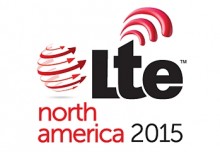Tying together IoT and predictive analytics
The public’s desire – indeed demand – to be connected at all times and in all aspects of work and play means that “off” is no longer an option for most businesses. For telecommunications carriers this creates a tremendous challenge: how to efficiently and cost-effectively maintain the critical infrastructure and equipment that support uninterrupted service delivery.
Fortunately the “Internet of Things” has brought technology and techniques to aid the carriers. IoT applications such as remote monitoring and control use sensor-enabled equipment to provide data on remote conditions. This data forms the building blocks of intelligent site management.
The raw data by itself is not enough, however. To become useful it must be interpreted and related to other relevant information. This is where predictive analytics – a variety of statistical techniques that analyze current and historical data to make predictions about future events – comes in. It provides actionable information that enables companies to manage sites intelligently, leveraging historical trends, real‐time data and predictive analytics to enable remote, preventive and reliable site management.
Carriers put analytics to work
Leveraging data and predictive analytics enables carriers to maximize uptime. For example, when Hurricane Sandy ripped through the Northeast in 2012, carriers operating in the metro New York City area needed to restore service as quickly as possible. Each carrier deployed portable generators, but one company had an edge because of its pre-existing plan for efficient generator deployment during power outages.
To create the plan, the carrier’s operations team considered several key factors: the priority of each location so they could sequence deployment to the highest priority sites; the predicted runtime of the backup batteries so they could gauge how long each site could stay on the air before the portable generator would be needed; and which locations had a portable generator interface or “gen plug” so the site could actually use a portable generator. In addition, to determine how long a portable generator would need to remain at each site, the team considered the equipment configuration, the power load and the generator power rating. These calculations are necessary because the portable generator must both maintain service and simultaneously recharge the batteries before being redeployed elsewhere.
Using site-specific information and predictive analytics software, the operations team prioritized the deployment sequence and computed an estimate of the time the portable generator would be needed at each location before it would be moved to another site. Thus, when the hurricane struck, this carrier was able to deploy generators efficiently, minimizing service downtime.
Read the entire article at RCRWireless.com




